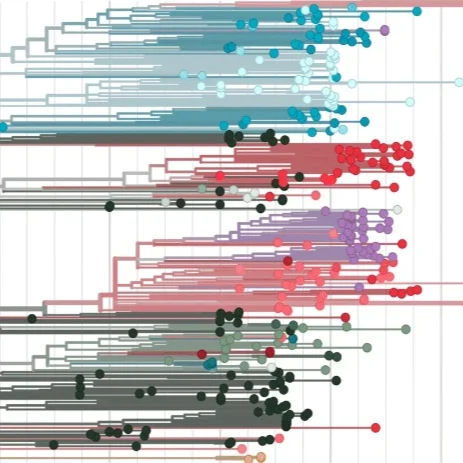Allison Black, Louise H. Moncla, Katherine Laiton-Donato, Barney Potter, Lissethe Pardo, Angelica Rico, Catalina Tovar, Diana P. Rojas, Ira M. Longini, M. Elizabeth Halloran, Dioselina Peláez-Carvajal, Juan D. Ramírez, Marcela Mercado-Reyes, Trevor Bedford
BMC Infectious Diseases
November 12, 2019
ABSTRACT
Background
Colombia was the second most affected country during the American Zika virus (ZIKV) epidemic, with over 109,000 reported cases. Despite the scale of the outbreak, limited genomic sequence data were available from Colombia. We sought to sequence additional samples and use genomic epidemiology to describe ZIKV dynamics in Colombia.
Methods
We sequenced ZIKV genomes directly from clinical diagnostic specimens and infected Aedes aegypti samples selected to cover the temporal and geographic breadth of the Colombian outbreak. We performed phylogeographic analysis of these genomes, along with other publicly-available ZIKV genomes from the Americas, to estimate the frequency and timing of ZIKV introductions to Colombia.
Results
We attempted PCR amplification on 184 samples; 19 samples amplified sufficiently to perform sequencing. Of these, 8 samples yielded sequences with at least 50% coverage. Our phylogeographic reconstruction indicates two separate introductions of ZIKV to Colombia, one of which was previously unrecognized. We find that ZIKV was first introduced to Colombia in February 2015 (95%CI: Jan 2015 – Apr 2015), corresponding to 5 to 8 months of cryptic ZIKV transmission prior to confirmation in September 2015. Despite the presence of multiple introductions, we find that the majority of Colombian ZIKV diversity descends from a single introduction. We find evidence for movement of ZIKV from Colombia into bordering countries, including Peru, Ecuador, Panama, and Venezuela.
Conclusions
Similarly to genomic epidemiological studies of ZIKV dynamics in other countries, we find that ZIKV circulated cryptically in Colombia. More accurately dating when ZIKV was circulating refines our definition of the population at risk. Additionally, our finding that the majority of ZIKV transmission within Colombia was attributable to transmission between individuals, rather than repeated travel-related importations, indicates that improved detection and control might have succeeded in limiting the scale of the outbreak within Colombia.

